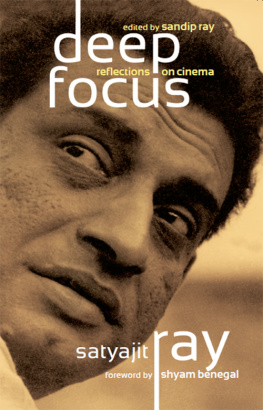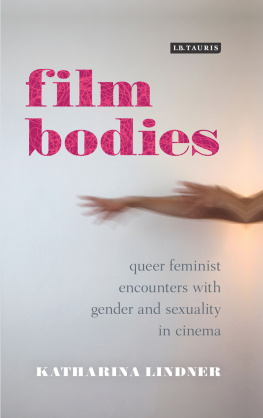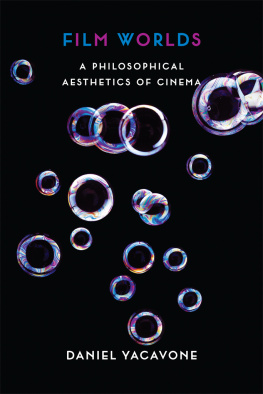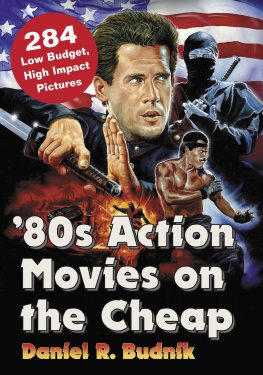Steen Ledet Christiansen is Associate Professor of English at Aalborg University, Denmark. His research focuses on popular visual culture, particularly film and the burgeoning field of post-cinema, on which he has written numerous articles and book chapters. Additionally, he is co-editor of a number of anthologies including Monstrologi: Frygtens manifestationer (2012) and Spgelser: Genfrdet som kulturel og stetisk figur (2012).
This extraordinary book combines lucid philosophical insight with careful analysis of film technique. Steen Christiansen shows us how recent action films actually work; and he speculates on why we are drawn to such films, and what this tells us about the state of digital culture.
Steven Shaviro, Wayne State University, USA; author of Post Cinematic Affect
Drone Age Cinema compellingly argues through detailed analyses of blockbusters like Sucker Punch and the Dark Knight trilogy that the contemporary action genre projects its power through an assault on the senses, situated within a cultural context of fear. A must read for anyone interested in action cinema, visual effects, spectatorship, and technologies and global power.
Angela Ndalianis, University of Melbourne
Drone Age
CINEMA
Action Film and
Sensory Assault
STEEN LEDET CHRISTIANSEN

Published in 2017 by
I.B.Tauris & Co. Ltd
London New York
www.ibtauris.com
Copyright 2017 Steen Ledet Christiansen
The right of Steen Ledet Christiansen to be identified as the author of this work has been asserted by the author in accordance with the Copyright, Designs and Patents Act 1988.
All rights reserved. Except for brief quotations in a review, this book, or any part thereof, may not be reproduced, stored in or introduced into a retrieval system, or transmitted, in any form or by any means, electronic, mechanical, photocopying, recording or otherwise, without the prior written permission of the publisher.
Every attempt has been made to gain permission for the use of the images in this book. Any omissions will be rectified in future editions.
References to websites were correct at the time of writing.International Library of the Moving Image 38
ISBN: 978 1 78453 640 4
eISBN: 978 1 78672 076 4
ePDF: 978 1 78673 076 3
A full CIP record for this book is available from the British Library
A full CIP record is available from the Library of Congress
Library of Congress Catalog Card Number: available
Contents
List of Plates
Iron Man 3: One of the suits is reassembling itself, having just disposed of several Extremis-infected villains (Marvel Studios 2013).
Iron Man 3: The nonhuman vectors of desire created by dancing bodies and metal suit (Marvel Studios 2013).
Sucker Punch: This top image is the beginning of the tracking shot, while the bottom one is near the end of the shot, which becomes the new physical space (Legendary Pictures 2011).
Sucker Punch: See above caption (Legendary Pictures 2011).
Sucker Punch: The smooth space of Babydoll gliding towards a killer robot (Legendary Pictures 2011).
The Dark Knight Rises: Batman in superhuman control on his Bat-Pod (Legendary Pictures/DC Entertainment 2012).
The Dark Knight Rises: Batman glides in superhuman control in his Bat (Legendary Pictures/DC Entertainment 2012).
The Bourne Supremacy: A close-up of Matt Damon as the truck crashes into his car in a crash-cam shot (Kennedy/Marshall 2004).
Mad Max: Fury Road: Clear articulation of space, as a war boy flies towards us (Village Roadshow Pictures 2015).
Mad Max: Fury Road: A fireball explosion with Max pivoting screen right on the pole (Village Roadshow Pictures 2015).
Crank: High Voltage: Above, we see Chev being jumpstarted and below is the supercinematic zoom onto his artificial heart (Lakeshore Entertainment 2009).
Crank: High Voltage: See above caption (Lakeshore Entertainment 2009).
Crank: High Voltage: The mirrored body of a woman, reduced to only legs (Lakeshore Entertainment 2009).
Jupiter Ascending: Caine being hurled towards a glass roof in a continuous shot (Village Roadshow Pictures 2015).
Jupiter Ascending: Jupiter and Caine are reduced to tiny dots against the sublime spectacle of destruction (Village Roadshow Pictures 2015).
Real Steel: Synchronous movement of Charlie and Atom (DreamWorks Pictures 2011).
Avatar: Movement into audience space, threatened by the predator beast (Lightstorm Entertainment 2009).
Avatar: The mighty Toruk being dominated from above by Jake (Lightstorm Entertainment 2009).
Transformers: Dark of the Moon: A soldier falls to the ground in a continuous shot (di Bonaventura Pictures 2011).
Transformers: Dark of the Moon: The Driller and Shockwave (di Bonaventura Pictures 2011).
Transformers: Dark of the Moon: A Decepticon leaps over Bumblebee in a sonic null extension (di Bonaventura Pictures 2011).
Battle Los Angeles: The underwhelming explosion of the alien craft, otherwise expressed through sound (Relativity Media 2011).
The Hurt Locker: Stillness through close-up, dust and a crawling fly (Voltage Pictures 2009).
The Hurt Locker: Tight framing produces intimacy and tension in the car bomb scene (Voltage Pictures 2009).
Acknowledgements
Although my keyboards did all the writing, many others had an influence on this book. Sarah Juliet Lauro and Meredith McCarroll, who accepted the paper from which everything grew. Gray Kochhar-Lindgren for early support and optimism when this book was only a paper. Anna Coatman for urging me to send in a proposal and guiding the book in its infant stages. Steven Shaviro for enthusiasm and drone music videos Ill use them in my next book. Madeleine Hamey-Thomas for her commitment to this project. Patrick Casey for improving my writing.
And LeAnne, of course, who believed in this book even when I did not.
An earlier, quite different, version of parts of
War of the Senses
Contemporary cinema is entering the drone age. There are two entry points. The first is the inevitable integration of drones into film production. Chow argues that we have transitioned into a mindset where war is not a solution, it is the solution, evident in phrases such as war on poverty, war on terror and so forth. Another way of phrasing the world as target is that perception has increasingly become power, because perceiving facilitates destruction. Cinema remains one of our dominant technologies of perception and so expresses how we conceive of the world as a target, and how perception and power fold together.
Nowhere is perception and power as intensely entangled as in contemporary action cinema. Action cinema works through bodily forces that stun our senses, and for more than a decade the genres audiovisual barrage has taken on an unprecedented intensity and speed, adapting to shifting cultural and technological environments. Contemporary action cinemas power is thus of utmost importance: its impact on our senses, its affective entrainment of our bodies and its ramifications for our preconscious sensibilities. Contemporary action cinemas affordances, potentialities and relations as it responds and adapts to cultural transitions is my primary interest here. The only way to understand these films cultural force is to first understand their aesthetic force. In fact, their aesthetic force is their cultural force; the way action films make us feel determines how they impact us. Cinema has weaponized our senses so that all we see are targets.
Next page









